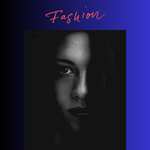We’ve all felt the pressure to keep up with trends—buying fast fashion hauls to fit in, squeezing into restrictive clothing for Instagram, or feeling “outdated” after a trend dies. But what happens when the pursuit of style crosses into self-harm? From eating disorders fueled by toxic beauty standards to eco-guilt over fast fashion, the dark side of fashion is real. Let’s unpack the trends harming mental health and how to fight back.
Table of Contents

1. The Return of “Heroin Chic”: Glorifying Unhealthy Bodies
Real-Life Example: TikTok’s obsession with the “heroin chic” revival (pale, gaunt looks popularized in the ’90s) has triggered relapse fears in eating disorder survivors.
- Data: 69% of teens say trends like “thinspo” make them feel pressured to lose weight (National Eating Disorders Association).
- Impact: A 2023 study linked prolonged exposure to “size-zero” influencer content to increased body dysmorphia in young adults.
- Victim Story: “I started skipping meals to fit into Y2K low-rise jeans. My therapist called it ‘fashion-induced anorexia.’” – Lena, 19
Solution: Follow body-positive influencers like @mikzazon and brands like Selkie, which celebrate diverse sizes.
2. The “Bridgerton Corset” Trend: Romanticizing Pain
Real-Life Example: Viral TikTok videos of people tightlacing corsets for a “tiny waist” have led to ER visits for rib bruising and breathing issues.
- Quote: “I passed out at a party because my corset was too tight. I just wanted to look ‘authentic’ for the trend.” – Rachel, 22
- Why It’s Toxic: Promotes the idea that beauty requires suffering.
Solution: Opt for modern shapewear designed for comfort, like Skims, instead of historically inaccurate torture devices.

3. Shein Hauls & Micro-Trends: Fueling Anxiety & Debt
Real-Life Example: A 20-year-old college student went viral after confessing she spent $3,000 on Shein hauls to “keep up” with micro-trends, leading to credit card debt and panic attacks.
- Data: 45% of Gen Z admits feeling “style FOMO” (fear of missing out) due to TikTok’s 24/7 trend cycle (Vice, 2023).
- Impact: Fast fashion’s disposability triggers eco-anxiety—73% of young shoppers feel guilty about their environmental impact (ThredUp).
Solution: Join the #NoBuyChallenge or try clothing swaps to break the cycle.
4. The “Clean Girl Aesthetic”: Perfection as a Prison
Real-Life Example: The “clean girl” trend (slicked hair, minimal makeup, neutral tones) has been criticized for excluding people of color and promoting unrealistic “effortless” beauty.
- Quote: “I spent hours trying to get the ‘clean girl’ look, only to be told my natural curls were ‘messy.’” – Priya, 25
- Psychological Toll: Perpetuates the myth that self-worth hinges on appearing “put together.”
Solution: Embrace the “messy girl” aesthetic—a TikTok backlash movement celebrating undone hair and bold self-expression.
5. The “One-Size-Fits-None” Scandal
Real-Life Example: Brandy Melville’s infamous one-size-fits-all policy (equivalent to a US XS/S) has been linked to body dysmorphia in teens.
- Data: 80% of women say they’ve felt excluded by brand sizing (Yoga Journal).
- Impact: Limited sizing sends the message that only certain bodies deserve to be fashionable.
Solution: Support inclusive brands like Universal Standard (sizes 00–40) and Parade (size-inclusive lingerie).
6. Social Media’s “Outfit of the Day” Pressure
Real-Life Example: A momfluencer shared her breakdown after spending $800/month on new clothes to avoid repeating outfits on Instagram.
- Quote: “I felt like a fraud. I was bankrupting my family just to look ‘effortlessly chic.’” – Emily, 29
- Behind the Scenes: Apps like LTK (LikeToKnowIt) pressure creators to constantly showcase new purchases for affiliate revenue.
Solution: Normalize outfit repeating! Follow accounts like @OutfitRepeatChallenge.
How to Protect Your Mental Health
- Curate Your Feed: Unfollow accounts that make you feel inadequate; follow diverse bodies and sustainable stylists.
- Practice “Mindful Shopping”: Ask: “Do I love this, or do I just fear missing out?”
- Rewear & Restyle: TikTok’s #OneItemThreeWays challenge proves creativity > consumption.
- Talk Back: Call out brands promoting harmful trends (e.g., comment on toxic ads).




